1. Singh G, Liskovoi L, Launer S, Russo F. The Emotional Communication in Hearing Questionnaire (EMO-CHeQ): development and evaluation. Ear Hear. 2019; 40(2):260–271. PMID:
29894380.
2. Picou EM, Singh G, Goy H, Russo F, Hickson L, Oxenham AJ, et al. Hearing, emotion, amplification, research, and training workshop: current understanding of hearing loss and emotion perception and priorities for future research. Trends Hear. 2018; 22:2331216518803215. PMID:
30270810.
3. Hopyan T, Manno FA 3rd, Papsin BC, Gordon KA. Sad and happy emotion discrimination in music by children with cochlear implants. Child Neuropsychol. 2016; 22(3):366–380. PMID:
25562621.
4. Pralus A, Belfi A, Hirel C, Lévêque Y, Fornoni L, Bigand E, et al. Recognition of musical emotions and their perceived intensity after unilateral brain damage. Cortex. 2020; 130:78–93. PMID:
32645502.
5. Ambert-Dahan E, Giraud AL, Sterkers O, Samson S. Judgment of musical emotions after cochlear implantation in adults with progressive deafness. Front Psychol. 2015; 6:181. PMID:
25814961.
6. Giannantonio S, Polonenko MJ, Papsin BC, Paludetti G, Gordon KA. Experience changes how emotion in music is judged: Evidence from children listening with bilateral cochlear implants, bimodal devices, and normal hearing. PLoS One. 2015; 10(8):e0136685. PMID:
26317976.

7. Mitchell RL, Kingston RA. Age-related decline in emotional prosody discrimination: acoustic correlates. Exp Psychol. 2014; 61(3):215–223. PMID:
24217140.
8. Juslin PN, Västfjäll D. Emotional responses to music: the need to consider underlying mechanisms. Behav Brain Sci. 2008; 31(5):559–575. PMID:
18826699.

9. Feltner C, Wallace IF, Kistler CE, Coker-Schwimmer M, Jonas DE. Screening for hearing loss in older adults: updated evidence report and systematic review for the US Preventive Services Task Force. JAMA. 2021; 325(12):1202–1215. PMID:
33755082.
10. Eerola T, Vuoskoski JK. A review of music and emotion studies: approaches, emotion modelss, and stimuli. Music Percept. 2013; 30(3):307–340.
11. Schellenberg GE, Krysciak AM, Campbell RJ. Perceiving emotion in melody: interactive effects of pitch and rhythm. Music Percept. 2000; 18(2):155–171.
12. Lundqvist LO, Carlsson F, Hilmersson P, Juslin PN. Emotional responses to music: experience, expression, and physiology. Psychol Music. 2009; 37(1):61–90.

13. Sammler D, Grigutsch M, Fritz T, Koelsch S. Music and emotion: electrophysiological correlates of the processing of pleasant and unpleasant music. Psychophysiology. 2007; 44(2):293–304. PMID:
17343712.
14. Vieillard S, Peretz I, Gosselin N, Khalfa S, Gagnon L, Bouchard B. Happy, sad, scary and peaceful musical excerpts for research on emotions. Cogn Emotion. 2008; 22(4):720–752.

15. Paquette S, Peretz I, Belin P. The “Musical Emotional Bursts”: a validated set of musical affect bursts to investigate auditory affective processing. Front Psychol. 2013; 4:509. PMID:
23964255.

16. Ekman P, Friesen WV. Constants across cultures in the face and emotion. J Pers Soc Psychol. 1971; 17(2):124–129. PMID:
5542557.

17. Russell JA. A circumplex model of affect. J Pers Soc Psychol. 1980; 39(6):1161–1178.

18. Laurier C, Sordo M, Serr̀a J, Herrera P. Music mood representations from social tags. In : Proceedings of the 10th International Society for Music Information Retrieval Conference, ISMIR 2009; October 26-30, 2009; Kobe, Japan. Montreal, Canada: ISMIR;2009. p. 381–386.
19. Lartillot O, Toiviainen P. MIR in Matlab (II): A toolbox for musical feature extraction from audio. In : Proceedings of the 8th International Conference on Music Information Retrieval, ISMIR 2007; September 23-27, 2007; Vienna, Austria. Montreal, Canada: ISMIR;2007. p. 127–130.
20. Tzanetakis G, Cook P. Musical genre classification of audio signals using geometric methods. In : Proceedings of the 18th European Signal Processing Conference; August 23-27, 2010; Aalborg, Denmark. Piscataway, NJ, USA: Institute of Electrical and Electronics Engineers (IEEE);2010. p. 497–501.
21. Girsang AS, Manalu AS, Huang KW. Feature selection for musical genre classification using a genetic algorithm. Adv Sci Technol Eng Syst J. 2019; 4(2):162–169.
23. Goldberg D. Genetic Algorithms in Optimization, Search and Machine Learning. Reading, MA, USA: Addison-Wesley Publishing Company;1988.
24. Bradley MM, Lang PJ. Measuring emotion: the self-assessment manikin and the semantic differential. J Behav Ther Exp Psychiatry. 1994; 25(1):49–59. PMID:
7962581.

25. Yang YH, Chen HH. Music Emotion Recognition. Boca Raton, FL, USA: CRC Press;2011.
26. Bland JM, Altman DG. Cronbach’s alpha. BMJ. 1997; 314(7080):572. PMID:
9055718.
27. Ekman P. Are there basic emotions? Psychol Rev. 1992; 99(3):550–553. PMID:
1344638.

28. Trehub SE, Endman MW, Thorpe LA. Infants’ perception of timbre: classification of complex tones by spectral structure. J Exp Child Psychol. 1990; 49(2):300–313. PMID:
2332726.
29. Goydke KN, Altenmüller E, Möller J, Münte TF. Changes in emotional tone and instrumental timbre are reflected by the mismatch negativity. Brain Res Cogn Brain Res. 2004; 21(3):351–359. PMID:
15511651.

30. Chau CJ, Wu B, Horner A. Timbre features and music emotion in plucked string, mallet percussion, and keyboard tones. In : Proceedings of the 40th International Computer Music Conference, ICMC 2014 and 11th Sound and Music Computing Conference, SMC 2014 - Music Technology Meets Philosophy; September 14-20, 2014; Athens, Greece. Ann Arbor, MI, USA: Michigan Publishing;2014. p. 982–989.
31. Laurier C, Lartillot O, Eerola T, Toiviaine P. Exploring relationships between audio features and emotion in music. In : Proceedings of the 7th Triennial Conference of European Society for the Cognitive Sciences of Music; August 12-16, 2009; Jyväskylä, Finland. Jyväskylä, Finland: European Society for the Cognitive Sciences of Music;2009. p. 260–264. DOI:
10.3389/conf.neuro.09.2009.02.033.
32. Saari P, Eerola T, Lartillot O. Generalizability and simplicity as criteria in feature selection: application to mood classification in music. IEEE Trans Audio Speech Lang Process. 2011; 19(6):1802–1812.
33. Juslin PN, Laukka P. Communication of emotions in vocal expression and music performance: different channels, same code? Psychol Bull. 2003; 129(5):770–814. PMID:
12956543.
34. Jaquet L, Danuser B, Gomez P. Music and felt emotions: How systematic pitch level variations affect the experience of pleasantness and arousal. Psychol Music. 2012; 42(1):51–70.
35. Gabrielsson A, Juslin PN. Exmotional expression in music performance: between the performer’s intention and the listener’s experience. Psychol Music. 1996; 24(1):68–91.
36. Darrow AA. The role of music in deaf culture: deaf students’ perception of emotion in music. J Music Ther. 2006; 43(1):2–15. PMID:
16671835.
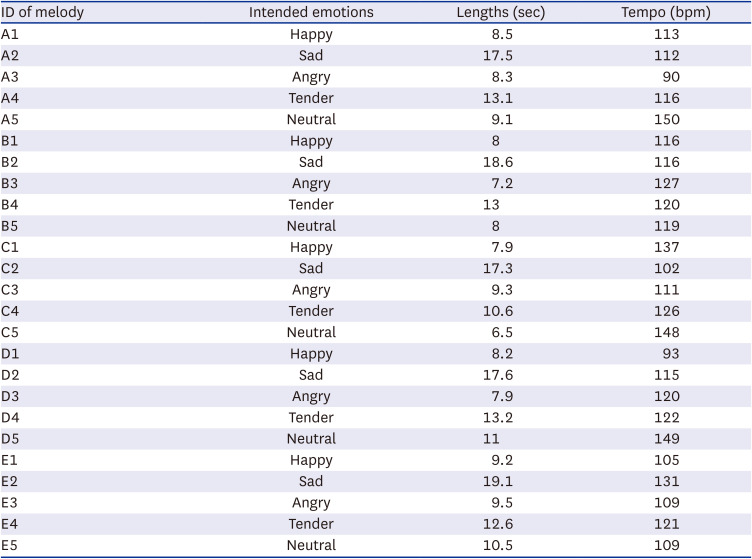
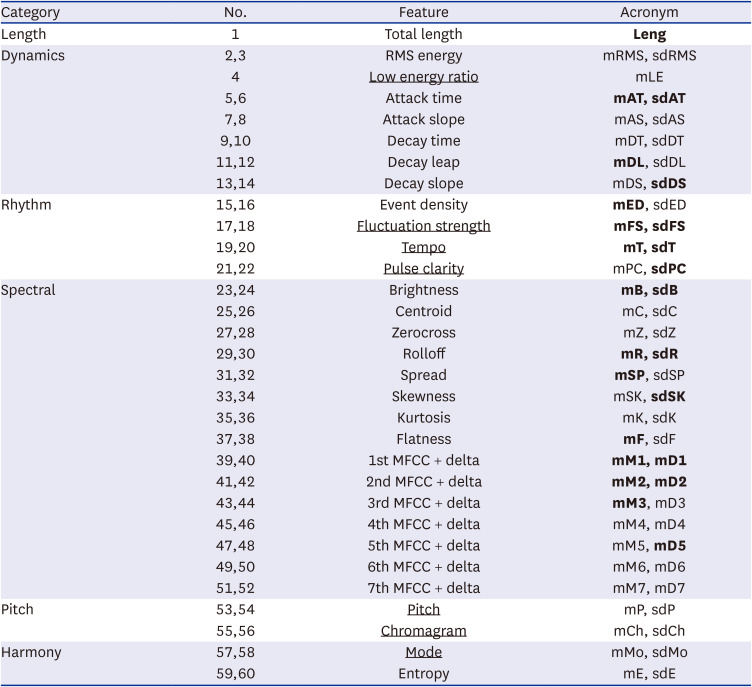

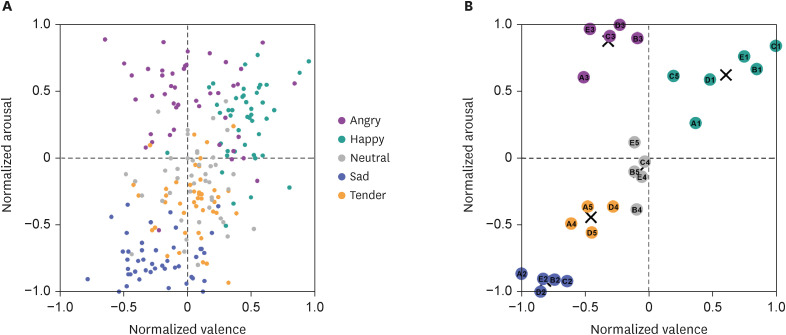

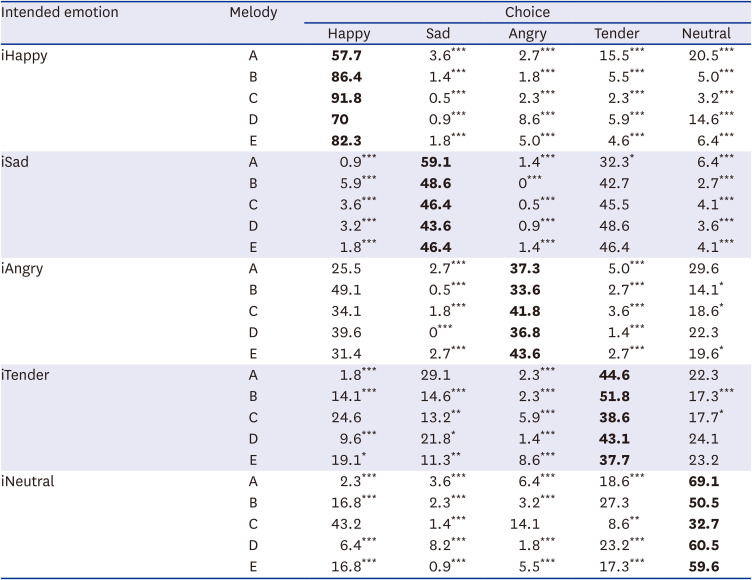




 PDF
PDF Citation
Citation Print
Print



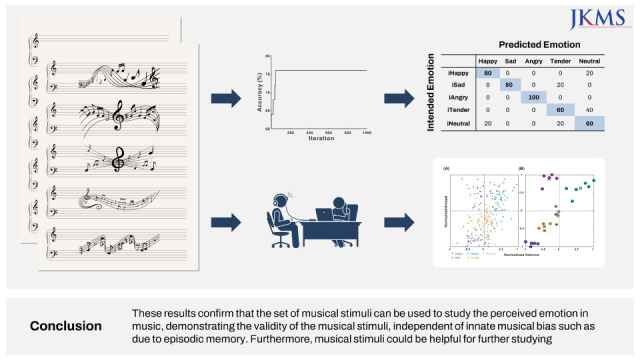
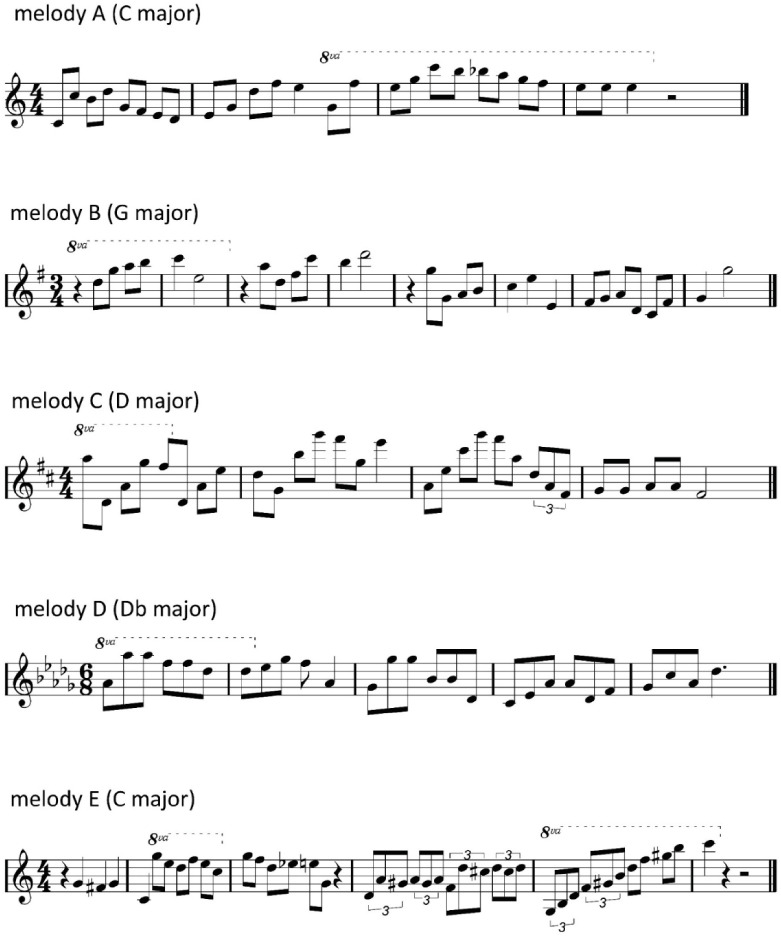

 XML Download
XML Download